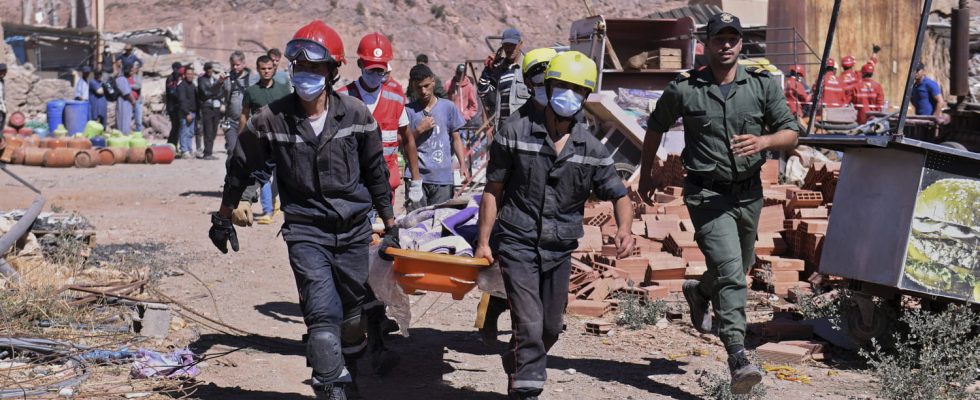In Morocco, relief workers and NGO humanitarian workers are still in a race against time to save victims and survivors. The situations vary greatly depending on the cities affected.
Nearly 3,000 dead and more than 5,600 injured,In the medina of Marrakech devastated, many villages in the Atlas destroyed. The human and material tolls are only provisional but already heavy after the earthquake and several aftershocks which ravaged Morocco on September 8. Four regions were particularly affected by the earthquake: Al Haouz, Taroudant, Chichaoua and Ouarzazate.
A first detailed assessment on a local scale is beginning to take shape with figures from the Ministry of the Interior. But it will still evolve. If help is still at handartwork five days after the earthquake, the The chances of finding survivors are now very low.
The most affected cities and provinces
Al Haouz is the province where the epicenter of the earthquake was located. This is where the authorities deplore the most victims: 1,684 of the 2,946 people who died lost their sight in this region southeast of Marrakech, according to the provisional report from the Ministry of the Interior. Victims spread across several villages and medium-sized towns: Amizmiz, Moulay Brahim, Ait Ourir or Tahannout. These residential areas, although perched on the heights of the Atlas, were among the first to see relief arrive, then humanitarian aid. But the damage is such that rescue operations lasted several days and the aid that arrives slowly is not enough to meet all the needs.
Taroudant borders the province of Al Haouz and also suffered the full brunt of the earthquake. At least 980 people died in this province. If the damage was as violent as in Al Haouz, the inhabitants of Taroudant did not see help arrive until later, especially in the villages of the High Atlas which were cut off from the world for several days after the earthquake. The only roads leading to these places were finally cleared on September 13, delaying the arrival of rescuers and humanitarian convoys.
In these villages, residents helped each other and, when they could, tried to extract survivors from the rubble. The injured were then evacuated by helicopter as in the village of Tajgalte.
Chichaoua was also shaken by the earthquake. Much material damage has been reported in this region as well as human losses with at least 202 victims. In Adassil, the solidarity of residents made it possible to provide basic necessities to the victims.
Ouarzazate, located east of Al Haouz, has at this stage 38 people died. A major security and relief effort was deployed in the province the day after the earthquake, but the damage and the results remain uncertain. Local rescuers and NGO humanitarian workers went, sometimes with difficulty, to these villages, also supported by neighboring communities less affected by the earthquake.
Marrakech and many other damaged cities
Marrakesh, located 50 kilometers north of the epicenter of the earthquake, is the largest city hit by the tremors. The damage is considerable, especially in the medina, the historic heart of the tourist city, the modern districts having resisted. Riads, minarets and other buildings have collapsed, except for a few monuments like the Koutoubia mosque, despite a reinforced concrete reinforcement plan carried out in the 2000s. It will take years to rebuild the medina.
18 people died in Marrakech due to the earthquake, but thousands of residents were injured and lost their homes. However, the latter were quickly taken care of by the emergency services mobilized in the hours following the earthquake. A few dozen people lost their lives in other cities in Morocco during the earthquake: there have so far been at least 11 deaths in Azilal, 5 in Agadir and 3 in Casablanca. Youssoufia or Tinghir are also bruised.
